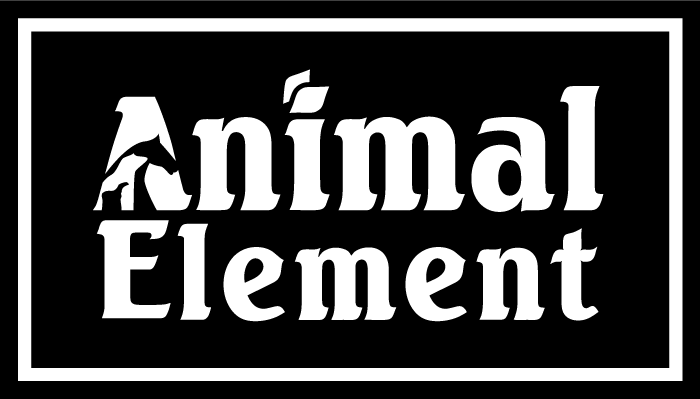Last updated on October 8, 2024
The Role of the Foregut and Hindgut in The Horses’s Digestive System
These days, it’s not uncommon to see gut problems blamed for all kinds of behavioral problems and issues in our horses digestive system. And while we at Animal Element are FIRM believers that health absolutely starts in the gut, we also believe that there are a lot of misnomers, misconceptions, misinformation and a total lack of understanding about the horse’s digestive system. It’s important to know the different functions of the foregut and hindgut, and how to keep them both healthy.
The Anatomy of the Horse’s Digestive System

The horse’s digestive system has about 100 feet of tubes and organs from esophagus to rectum, and takes roughly 36-72 hours to digest food stuff completely from ingestion to waste matter (feces). It’s categorized into two sections: the foregut and the hindgut. The foregut contains the mouth, esophagus, stomach and small intestines. It is here that digestion starts, and most of the non-fibrous nutrients get absorbed. Fun fact: the horse actually has a very small stomach in relation to the size of its body at only a 2-4 gallon capacity! [1]
After food passes through the small intestines, it goes to the hindgut. This is made up of the cecum, large and small colons, and rectum and where the majority of digestion takes place. Billions (yes, billions with a B) of microbes reside in the cecum and colons and are responsible for the fermentation and digestion of the food matter, as well as absorption of some vitamins and nutrients. This requires gallons of water to keep everything running smoothly, and any extra fluid not used in the digestion process is “recycled” by the small colon and returned to the body. [2] Any material not digested is turned into feces balls and expelled through the rectum.
How to Keep the Gut Healthy

Knowing the different roles and functions of the foregut and hindgut, it is imperative to take that into consideration with your feed program. Most of us KNOW that horses are made to graze throughout the day (or at least eat multiple small meals throughout the day) and that they need large amounts of water each day. But when we consider how small their stomach is and how much water is required by the hindgut to break down food, it makes sense why horses without constant access to forage or plenty of water would often experience ulcers, colic, or other digestive issues.
The number one way to keep your horse’s gut healthy is by feeding multiple small meals throughout the day. Because their stomachs can only hold a small amount of food at a time, having access to forage 24/7 is ideal for a horse’s digestive system. But that isn’t necessarily possible for some horse owners, so offering small meals throughout the day allows for the stomach to be able to process their meal efficiently. Frequent meals can keep the acids from creating ulcers. Also pay attention to the quality of forage and feed. Horses do best on high fiber, low starch diets.
Make sure your horse has access to fresh, clean water at all times. Horses need approximately 25-30 gallons of water a day to keep fully hydrated and their digestive system working properly. (But if your horse is exercising, competing, lactating or in extreme temperatures, they will need to consume even more water). The large colon alone can hold 15-20 gallons of water, and if there is not enough water to help break down the fibrous material, colic can occur. [3]
NuTrack Helps Keep Your Horse’s Digestive System Healthy

Another fantastic way to keep your horse’s gut happy and healthy is to feed NuTrack Digestive Support. NuTrack contains 14 amino acids and 7 minerals, and is one of the most concentrated, high-quality direct-fed microbial products on the market. This supplement supports the breakdown of fibrous material through fermentation in the small and large colon, ensuring that your horse’s digestive system flows smoothly. NuTrack cleans out everything that is no longer needed in the digestive tract, working from the foregut to the hindgut. Because all the “extras” are flushed out and not just left sitting in the hindgut, this ultimately can help prevent issues such as impaction. This reduces the risk of colic and stomach ulcers, as well as allowing for maximum nutrient absorption. Just a half ounce a day for the average sized horse will keep your horse’s digestive system healthy and happy!
You can order straight from our website, or reach out to your local dealer. We’d love to know how your horse does on NuTrack! Contact us at 877-338-6977 or email us at info@animalelement.com with your testimonial (or questions)!
All content is meant for informational purposes only. Proudly written for Animal Element by the team at FaithHanan.com
Resources:
- “Synopsis of the Digestive Anatomy and Physiology of the Horse.” Iowa State University Extension and Outreach, https://www.extension.iastate.edu/equine/synopsis-digestive-anatomy-and-physiology-horse#:~:text=The%20horse%27s%20foregut%20is%20comprised,of%20most%20non%2Dfiber%20nutrients.
- Jones, Kelly. “The Hindgut’s Role in Digestion.” Hagyard Equine Medical Institute, https://www.hagyard.com/the-hindguts-role-in-digestion
- Jones, Kelly. “The Hindgut’s Role in Digestion.” Hagyard Equine Medical Institute, https://www.hagyard.com/the-hindguts-role-in-digestion

